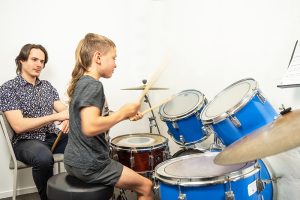
People think of war veterans when they hear the term ‘posttraumatic stress disorder’ or ‘PTSD.’ The symptoms were initially related to the battlefield- combat fatigue after the First World War or shell shock after the World War II.
However, at present, the victims of non-battle trauma may also suffer from the said mental health condition. The experiences mainly include bombings, mass shootings, accidents, and sexual assaults.
PTSD triggers are known for being embedded in the natural environment of a person. The symptoms come forth due to things happening inside the body, such as emotions and thoughts, and things outside the body, such as a stressful situation. Apart from providing information about the types of triggers, the following write-up also specifies ways to identify and cope with them. Please check it out right now.
Different Types Triggers for PTSD
The experts from the seminary school said triggers could be divided into internal and external. The former can be a memory, sentiment, assumption, or bodily sensation. On the other hand, the latter can be a place and person that the concerned patient encounters daily.
- External PTSD Triggers: birthday or marriage anniversary, argument, certain odors, holidays, news article, a movie or television show, and a destination.
- Internal PTSD Triggers: anxiousness, anger, sense of abandonment, vulnerability, frustration, abnormal heartbeat, joint pain, sadness, and muscle tension.
How to Recognise PTSD Triggers?
People must think about when their symptoms normally crop up. They must ask themselves a series of questions like ‘what is happening all around you?’, ‘how do you react to certain events?’, ‘what thoughts have you been experiencing?’, etc., and write everything down in the paper.

Dealing with PTSD Triggers
Instead of coping with the PTSD triggers, it will be much better if people can avoid them completely. That seems a tad bit difficult because how can one control emotions, thoughts, and body sensations, right?
For the external triggers stated above, the people must undertake specific steps to manage the environment. For example, they must not visit places that tend to remind them of the traumatic event they have experienced. But, what about things that they may come across inadvertently?
Since certain triggers are unavoidable, try to cope with them by implementing the below-mentioned strategies with utmost caution.
- When feeling scared or stressed, it is highly essential to breathe properly. Look out for a comfortable position. Sit straight on the bed or lie on their back. Close the eyes and take a large amount of air inside. Count until five and release it.
- Mindfulness is the best therapy for PTSD, and several seminaries with counseling degrees have vouched for the same also. It alleviates the intrinsic relationship between posttraumatic distress and maladaptive thinking. Focus on the things that are happening around, such as sounds and sights. Be in touch with the present rather than getting entangled in the past or future aspects.
- According to many medical professionals, journaling or expressive writing allows people to cope with PTSD seamlessly. Once a person chalks everything down going on in his or her mind on paper, he or she feels much better.
- Attending group therapy has proven equally beneficial as individual therapy. Group therapy acquired widespread popularity probably by being with people suffering from the same condition; a person gains confidence. He or she learns that he or she is not alone struggling. Group therapy paves the way for trusting, healthy, and supportive relationships.
The ways above are tried and tested, so one may opt for them without any hesitation.
Even though being aware of the PTSD triggers is necessary, doing so leads to a tad bit of distress. Some people admitted becoming triggered when they tried to identify the triggers. So, make sure to fabricate a safety plan, which will offer protection during a sudden crisis. Write the emergency numbers of doctors, friends, and family members, and have the medicine bottle near all the time.






